
|
|
GT-Four history GT-Four is an abbreviation of 'Grand Touring Fulltime On-road Uniquely Responsive'. The beginning; the ST165 The ST165 was released in October 1986. Based on the n/a ST162 Celica, this was the first road-going version of Toyota's 4wd WRC car and at the time had Japan's most powerful 2L engine. Powered by the 1st revision 3S-GTE engine, which pumps out 185 bhp, the ST165 goes from 0-63 mph in just over 8 seconds. Like the rally car, the road car also had the water-to-air intercooler and fulltime all wheel drive, which improved the handling a lot. The colours customers at the time could choose from were black, white, red, dark blue and grey. Like all Celicas, the ST165 too got a facelift in August 1987. The later spec. models had a boost gauge, better brakes and a gearbox oil cooler. The exterior got some little cosmetic improvements too, but still from all GT-Four models made the ST165 is the hardest to distinguish from the n/a version. 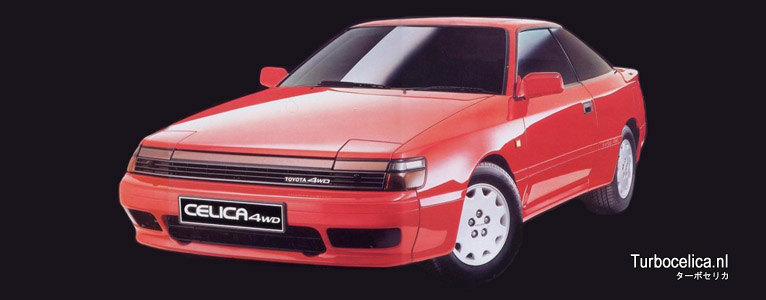 The ST185: going sexy September 1989: while TTE still uses the ST165 for WRC rallying, the road car is replaced by the new shape ST185. The biggest difference is the exterior; while the pop-up lights stayed, the boxy design now turned into a smooth, sexy curved style. Japanese models were available in a narrow body (see the picture below) or widebody shell, export models were widebody only. A very small number of ST185 Rally models was also sold in Japan. These cars had no power windows or other luxury items and due to the shorter geared transmission and reduced weight they were the quickest road going ST185 model money could buy.* The biggest differences between the ST185 and ST165 engine-wise are the new twin-entry CT26 turbo and an air-to-air intercooler, aka interwarmer, as it suffers from heat soak a lot. The scoop on the bonnet leads cool air to the intercooler, and this same scoop gives away you're looking at a GT- Four (or a replica). During the last months of 1991 Toyota came with a facelift for the ST185. This included different tail lights, front bumper (Japan only), font badges, and other options to choose from. Chassis number 15,446 is believed to be the first facelifted one. Later spec. 185's also had bigger front brakes with single pot calipers, while the earlier models had twin pot calipers and smaller discs. Along with the facelift model, Toyota introduced my car; the Celica GT-Four Carlos Sainz limited edition. 0-63 mph now takes around 7 seconds thanks to the 2nd generation 3S-GTE engine. * For more information about the different ST185 models, please see the ST185 Models page. 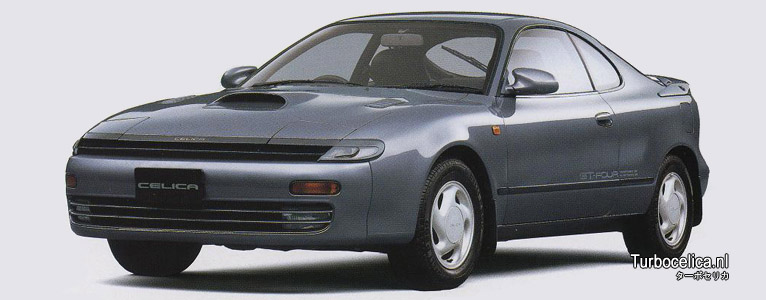 WRC Champions! A change in FIA regulations at the time required 5000 road going models to be manufactured to allow a car to be used in WRC rallying. Numerous aspects of the normal ST185 design meant some changes were required to provide the necessary durability in harsh rally conditions. Therefore, Toyota made a limited number of 5000 special edition GT-Fours, named after El Matador himself; Carlos Sainz. This however was the European name, in Japan it was called the GT-Four RC (Rally Competition), while Australia got the GT-Four GrpA Rallye. The exterior is visually different to the ST185; instead of a scoop, the bonnet has an air vent (to expel hot air from the turbo) and a small round scoop to provide cooling air to the cambelt housing (found to melt during rallying on older models). The bumper also has bigger vents, and is mounted on a lightweight aluminium bar. Technical advantages are amongst others a water-to-air intercooler with radiator water sprayers (deactivated), metal turbine in the turbo, fuel maps for higher boost levels, lightweight exhaust and the E151F shorter ratio gearbox. Due to aggressive timing and higher octane fuel in Japan, the RC's had around 230 bhp, while Euro models put out 208 factory horsepowers. 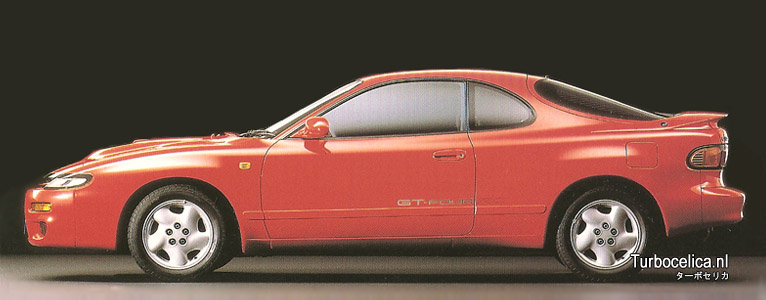 Generation 3: the ST205 After winning the 1992 World Rally Championship for Drivers and the 1993 and 1994 drivers and manufacturers championships, the new GT-Four - the ST205 - was born. It was quite different in setup, engine-wise and body-wise. The 3rd generation 3S-GTE puts out 245 bhp as standard, and uses no longer an airflow meter (AFM). Like the Carlos Sainz models the ST205 used a water cooled intercooler. Once again a certain number of road going versions had to be built (2500) which like the CS had intercooler water sprayers (also deactivated, but mounted for the WRC homologation). These ST205 'WRC' models also had anti-lag installed (disabled) and riser blocks with 'GT- Four' inscription to lift the rear wing. The pop-up headlights were taken away and the ST205 got four fixed headlights instead. The new GT-Four also had Toyota's 'Superstrut' suspension to improve handling, along with bigger 4 pot front and twin pot rear brakes. A facelift in 1997 contained minor exterior changes. Due to illegal turbo restrictors on the Grp. A8 rally ST205's, Toyota got banned from the WRC during the 1995 season. 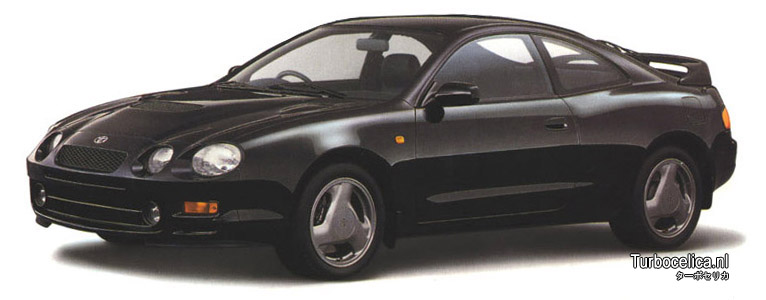 The end of the Celica GT-Four era Designated as the ST246, the Toyota Caldina is the latest GT-Four model. This rather 'normal' looking family car, which is available in Japan only, features the 4th generation 3S-GTE with coil-on-plug ignition and puts out 260 bhp. Interesting fact is that the turbo is casted to the exhaust manifold on this engine. New to the GT-Four story is that the Caldina is also available with an automatic gearbox. Again Toyota decided to go for an air-to-air intercooler, hence the bonnet scoop is back too: 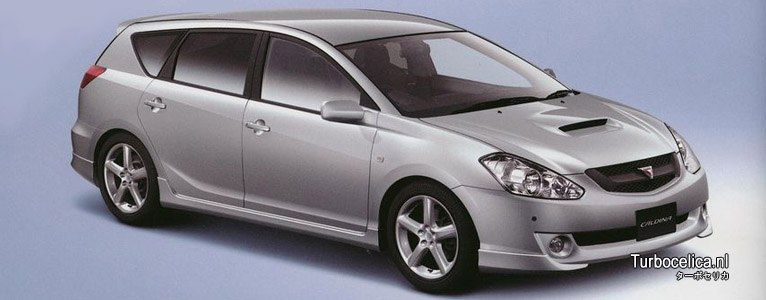 Since the production of the 'new shape' generation 7 Celica has stopped, there probably won't be a new production Celica GT-Four. The legend however, will continue.   Related links Related linksST185 Models Top |
|
|